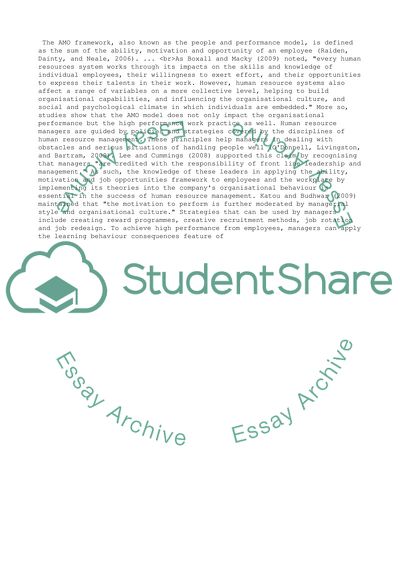Cite this document
(“Operationalising the AMO (Ability, Motivation, Opportunity) framework Assignment”, n.d.)
Retrieved from https://studentshare.org/management/1456725-operationalising-the-amo-ability-motivation
Retrieved from https://studentshare.org/management/1456725-operationalising-the-amo-ability-motivation
(Operationalising the AMO (Ability, Motivation, Opportunity) Framework Assignment)
https://studentshare.org/management/1456725-operationalising-the-amo-ability-motivation.
https://studentshare.org/management/1456725-operationalising-the-amo-ability-motivation.
“Operationalising the AMO (Ability, Motivation, Opportunity) Framework Assignment”, n.d. https://studentshare.org/management/1456725-operationalising-the-amo-ability-motivation.


